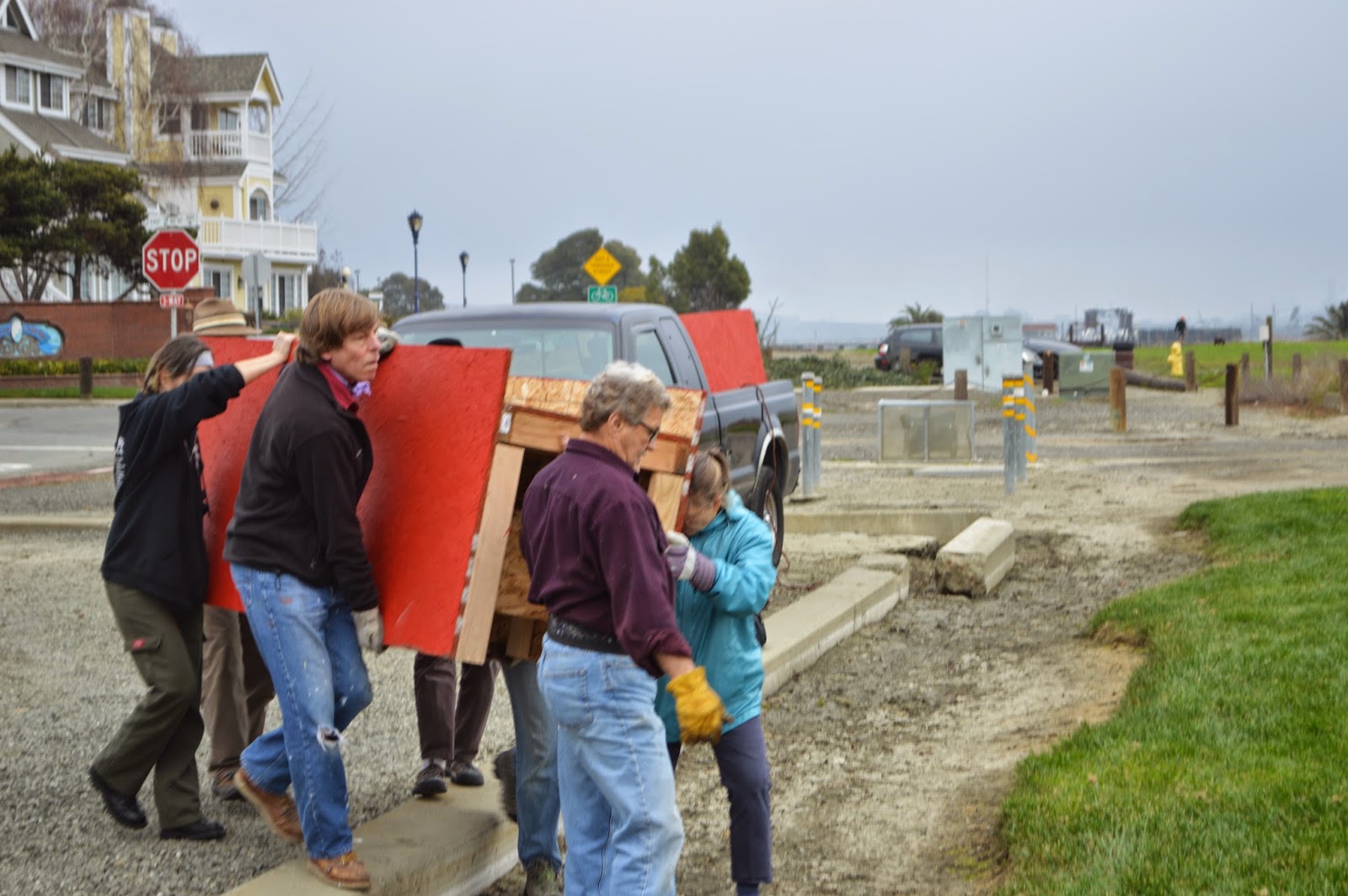We've done as much as we can on the structure without going to the actual point where it has to be built. Accordingly, we must now undertake the coordinated effort to move each of the pieces of the project from the caboose to the green at the base of 2nd street where it will be assembled.
Torquing Cable Down
We were to start at 11 a.m. At the caboose. Fully charged with a café au lait, your correspondent showed up at the caboose at about 11:15. By this time I found that half of the major pieces were
already mounted on a variety of pickup trucks. It seems all
real artists have pickup trucks and apparently half of the pickups in Benicia were present at the caboose. People were practicing tying large objects to the rear beds of their trucks. A variety of approaches as to tying pieces of the project on the each of the trucks were evident.
Making Absolutely Certain
Once everything was firmly tied down I have to race people to get dramatic pictures of pieces of the project of arriving at the Second Street green. I did get pictures but I'm not sure if they were dramatic.
Parade of Cabinetry
Once all of our transfer vehicles were lined up on the Green it was time to take off all of the pieces of the project and assemble them on the green.
Many hands...
Assembly of the long outflow section was made easier by the fact that Mark had taken the precaution of numbering the outflow sections appropriately, so that the outflow section pieces dropped down three quarters of an inch per section.
Checking the pipe
Outflow intact!
The round main section was a more delicate task. For it to work all of the segments of the circular section had to be roughly the same height. The Festival of assembly began.
Festival of Shimming
Once the assembly of the structure of the circular section was complete, the most delicate task, that of putting a skirt on the circular section, began. This skirt was made in square pieces each of which had to match perfectly with the last in order for the skirt to fit.
I cannot believe this worked...
After a good deal of slipping and shifting of pieces back-and-forth we finally had a skirt on the main section and our international orange straight section was extending out roughly to the East. No astronomical alignment was performed, although it would lend a neat Stonehenge-like aura.
We are not lined up with anything, but I bet there will be a lot of theories
Of course, the reward for all our efforts, pizze, one of which was fashionably gluten-free.
Larnie Delivers...
All that remained was the painting of the skirt of the main section, installation of the actual plastic lining of the Maze which would hold the plants to clean water, and, of course, installation of the plants themselves
More about that next time...

 The finished planting - a sod maze...
The finished planting - a sod maze...







































